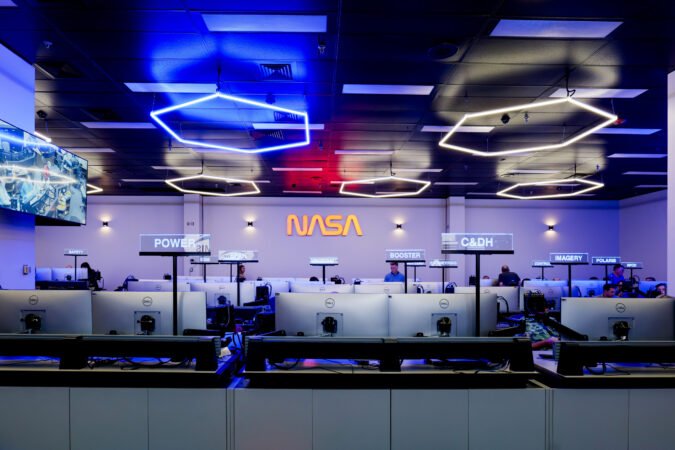Summary Points
-
Monitoring Mission Success: NASA’s Orion spacecraft, on the Artemis II mission, is being closely monitored by a specialized team at the newly established Orion Mission Evaluation Room, which supports mission operations, data collection, and analysis.
-
Expert Collaboration: Engineers from NASA, Lockheed Martin, ESA, and Airbus provide interdisciplinary expertise across 24 console stations to handle Orion’s systems and address any unexpected behaviors during the mission.
-
Continuous Data Analysis: The team will analyze the extensive data produced during the Artemis II flight, comparing it to expected performance metrics, enhancing understanding of the spacecraft’s capabilities both during and after the mission.
-
Setting Future Goals: The Artemis II mission will carry a crew around the Moon, paving the way for future lunar landings and facilitating preparation for human missions to Mars as part of NASA’s broader Artemis program.
NASA’s New Orion Mission Evaluation Room Set for Artemis II
NASA’s Artemis II mission is a leap forward in human space exploration. As the Orion spacecraft carries a crew around the Moon, a dedicated team of engineers at the Johnson Space Center in Houston will monitor every aspect of the journey. They’ll work from the newly constructed Mission Evaluation Room (MER) designed for this critical mission.
Inside the MER, dozens of engineers will analyze data while the flight control team operates from the White Flight Control Room. This setup allows for real-time oversight and rapid response to any unexpected challenges. Engineers from NASA, Lockheed Martin, the European Space Agency, and Airbus will collaborate, bringing specialized knowledge to the operation. Each of the 24 console positions hosts teams with expertise in various spacecraft subsystems, ensuring thorough monitoring.
Trey Perryman leads the effort in the Orion Mission Evaluation Room, supported by Jen Madsen, the deputy manager for Orion’s systems. Their team will assess new systems during Artemis II, as these technologies represent a significant advancement for future missions. The MER officially opened on August 15, underscoring NASA’s commitment to safety and innovation.
The evaluation room operates in three shifts throughout the nearly 10-day mission, with staffing prior to liftoff to ensure readiness. Engineers will collect and analyze a massive volume of data, providing insights that help refine spacecraft performance. “Data collection is hugely significant,” Perryman noted, highlighting the importance of comparing real-time data against expectations.
Should any unplanned situations arise, the MER boasts additional support from various engineering teams, enhancing the mission’s resilience. The collaboration extends to international partners, reinforcing the global commitment to space exploration.
The Artemis II test flight will feature NASA astronauts Reid Wiseman, Victor Glover, and Christina Koch, alongside Jeremy Hansen from the Canadian Space Agency. This mission represents a pivotal step in returning humans to the lunar surface and ultimately setting the stage for future missions to Mars.
With cutting-edge facilities and a skilled team, NASA is poised to expand our understanding of space. The lessons learned from Artemis II will drive technological advancements that benefit future generations and deepen our relationship with the cosmos.
Stay Ahead with the Latest Tech Trends
Stay informed on the revolutionary breakthroughs in Quantum Computing research.
Explore past and present digital transformations on the Internet Archive.
SciV1

